The Eden Project
The purpose of our trip to Cornwall was to spend a day at the Eden Project which is nearby St. Austell. It was conceived as a grand green undertaking to introduce ordinary people to the plants that contribute to human life and health. It was Cornwall’s designated Millennium Project, one of 12 constructed around Britain to celebrate the year 2000. Perhaps the most notorious is the Millennium Dome near London which was largely a flop until taken over and transformed into a successful private venture.
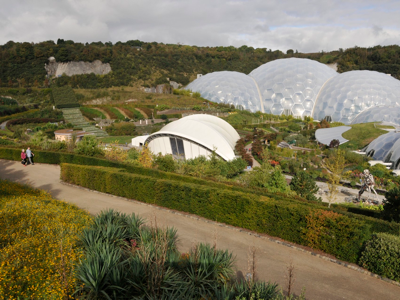
Eden Project: winding walks among gardens leading to the geodesic Biomes.
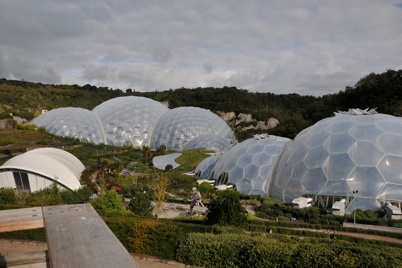
Rainforest domes at top. Mediterranean climate dome on the right.
Our Eden hosts noted that when their project was proposed the national press rated it most likely to fail. After all, the site was a long train or car ride from London. To succeed it would have to attract a million or so paying visitors each year, and Cornwall only has 500,000 residents. The press evidently wasn’t counting on tourists, but the creators of Eden were. Cornwall attracts millions each year, so the project was oriented and strongly marketed to them.
Eden opened in 2000 and this year will welcome about one million visitors. Adult admission price is approximately $25 at the current exchange rate. Eden has a wide variety of evening programs, education offerings, and special events. In many ways, it is similar to California Academy in mission and scale, if you take away the fish and the planetarium and natural history museum and expand the Academy’s Rainforest by about a factor of ten. Eden does have living creatures but they are of the ant and bug variety found in most gardens.
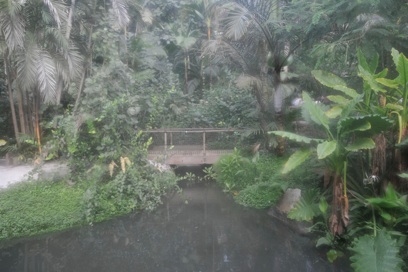
Inside the rainforest: hot and humid!
Eden also has land - space - and much of it consists of outside gardens, pathways, and exhibits. In fact, it would be possible to have a great day at Eden and not even go into the biomes, as the domes are called. A couple of biomes are dedicated to the rain forests of the tropics, complete with plants from all over the world, pools, waterfalls, and so forth. Another focuses on the regions of the world that share a Mediterranean climate. A new dome is planned as well, one that will be dedicated to plants in arid climates.
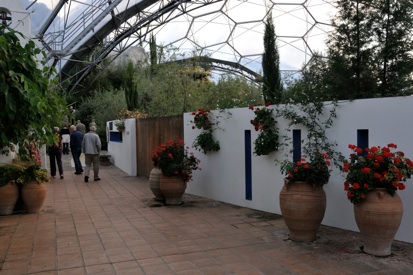
Mediterranean climate dome
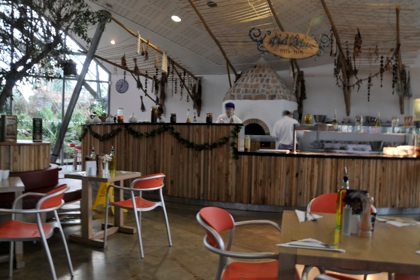
Mediterranean theme restaurant: one of five or six eating places.
The only plants in the domes and the gardens are those that have use for humans, such as food, fuel, fibers for clothing, medicine, and so forth. Mere ornamentals need not apply. The displays are very well done and interweave information, the plants themselves, and various works of art, some of which are more appealing than others.
Eden has a large staff of botanists - from chaired curators to students - who are involved in running the institution, staffing the exhibits, and carrying out research programs. They talk of being a “no box” institution, one that discourages the compartmentalization of people into specific functions - or hierarchies - such as Research, Education, and Gardeners, but rather celebrates the integration of the staff and their functions. They also discourage words like “interpret” or “explain” or even “guide” since they feel that the goal is to make visitors feel welcome and engage them in learning by interacting not teaching. One result is that the people we would refer to as “guides” are called “pollinators.” It’s amusing but an important concept and commitment.
Throughout Eden are various stations where staff make informal presentations throughout the day. A cider-making demonstration was particularly popular when we visited, though many others were on the schedule. The staff who entertain visitors waiting in line to gain admission are referred to as “Line Buskers.” Eden’s messages begin even before you buy at ticket.
Eden has extremely active educational programs to engage students and visitors about all aspects of sustainability. It’s a theme encountered at every turn, and one that is presented in a clear but low key style.
Overall, Eden is an impressive and obviously successful project. Kudos to the visionaries who dreamed of converting an old clay quarry into an innovative institution devoted helping people learn about the challenge of sustainability. The staff we met were equally impressive and passionate about the cause Eden represents. Given that Eden is a long way from London, it’s not surprising that relatively few of its visitors come from the US. This is a pity, since a visit is well worth the journey, and thanks to First Great Western train service, the journey is easy. Anyone who loves the California Academy would love Eden, that’s for sure. We are glad we went and look forward to future visits.
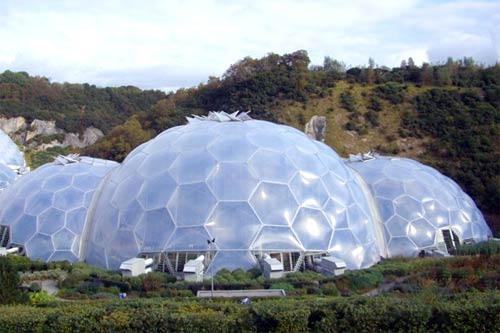
View of domes
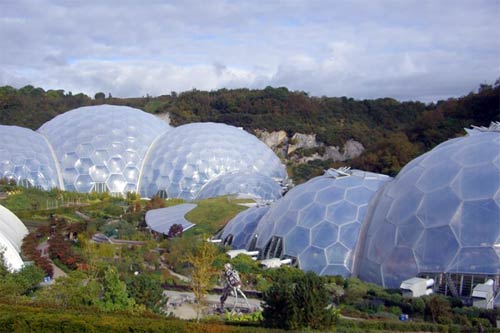
More domes

The Great Bee
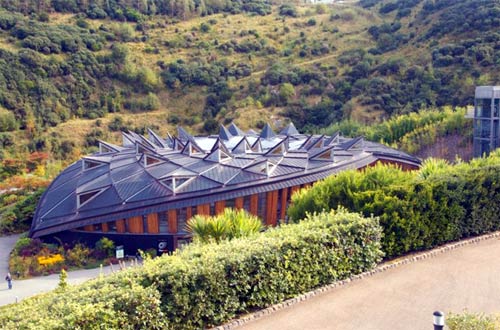
Education building
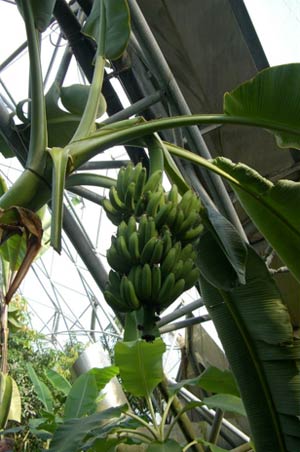
Real bananas!